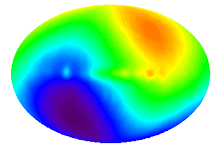Gut-Liver Axis and Sensing Microbes
Detoxification’ of gut-derived toxins and microbial products from gut-derived microbes is a major role of the liver. While the full repertoire of gut-derived microbial products that reach the liver in health and disease is yet to be explored, the levels of bacterial lipopolysaccharide (LPS), a component of Gram-negative bacteria, is increased in the portal and/or systemic circulation in several types of chronic liver diseases. Increased gut permeability and LPS play a role in alcoholic liver disease where alcohol impairs the gut epithelial integrity through alterations in tight junction proteins. In addition, non-alcoholic fatty liver disease is also associated with increased serum LPS levels and activation of the pro-inflammatory cascade plays a central role in disease progression. Microbial danger signals are recognized by pattern recognition receptors such as the Toll-like receptor 4 (TLR4). Increasing evidence suggests that TLR4-mediated signaling via the MyD88-dependent or MyD88-independent pathways may play different roles in liver diseases associated with increased LPS exposure of the liver as a result of gut permeability. For example, we showed that in alcoholic liver disease, the MyD88-independent, IRF3-dependent TLR4 cascade plays a role in steatosis and inflammation. Our recent data demonstrate that chronic alcohol exposure in the liver leads to sensitization of Kupffer cells to LPS via a mechanism involving upregulation of microRNA-155 in Kupffer cells. Thus, understanding the cell-specific recognition and intracellular signaling events in sensing gut-derived microbes will help to achieve an optimal balance in the gut-liver axis and ameliorate liver diseases.
skip to main |
skip to sidebar
網誌存檔
-
▼
2012
(31)
-
▼
4月
(31)
- Gut-Liver Axis and Sensing Microbes
- The Microbes of the Intestine An Introduction to T...
- Effect of Interactions of Bacteria, Viruses, and E...
- Human gut microbiome: the second genome of human body
- Microbiota immune system interaction: an uneasy al...
- Metagenomics: Key to Human Gut Microbiota
- MICROBIOTA:THE FOGORTTEN ORGAN
- Gut Microbiota and Its Pathophysiology in Disease ...
- GUT MICROBIOTA
- The gut microbiota as an environmental factor that...
- Human gut microbiome: the second genome of human body
- Microbiota immune system interaction: an uneasy al...
- Whole body systems approaches for gut microbiota t...
- HUMAN SUPERORGANISM
- Infection Control in the Multidrug-Resistant Era: ...
- The gut's 'friendly' viruses revealed
- Ecological and evolutionary forces shaping microbi...
- 功能元基因组学与中药研究国际研讨会
- 不適當不合理的過度的抗生素使用,將殺害對我們人體有益的細菌。抗生素使用考慮的除了聚焦在細菌抗藥性之外...
- 停止殺害對我們人體有益的細菌
- 人類腸道中的微生物體,提供了豐碩的有關健康和疾病的信息。它們訴說了人體內在的運轉運作的故事。
- 人類腸道微生物體,具有消化、生物降解、生物聚合、生物轉化、解毒作用、防衛功能、促進生長成長發展發育成...
- 人類超級生物體和人類微生物體
- 這個廣泛的微生物基因體參與了食物、藥物和其他有毒性的化合物的,初次通過的新陳代謝和生物可利用性的生物...
- 這個人類超級生物體,包括了兩套基因體,一個完整的人類基因體和數目巨大的微生物基因體。這兩套基因體一定...
- 人類腸道的微生物體能夠控制器官的功能。
- 人類腸道微生物體,是一個最緻密的、最複雜的、最生物多樣性的、動態的生態體系。生態的和演化的力量形塑人...
- 人類腸道微生物體,包含了大約一百兆個微生物,它的數目是人類身體所有細胞數目的十倍,這個人類腸道微生物...
- 人類腸道微生物體和人類超級生物體
- 人類腸道微生物體和人類超級生物體
- 人類生態系統是非常重要的,它決定甚麼是我們能做的和甚麼是我們能吃的。
-
▼
4月
(31)

沒有留言:
張貼留言